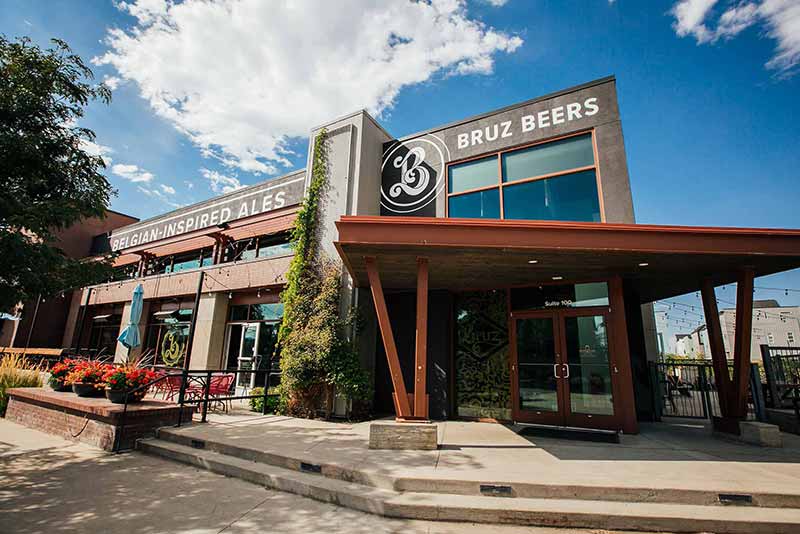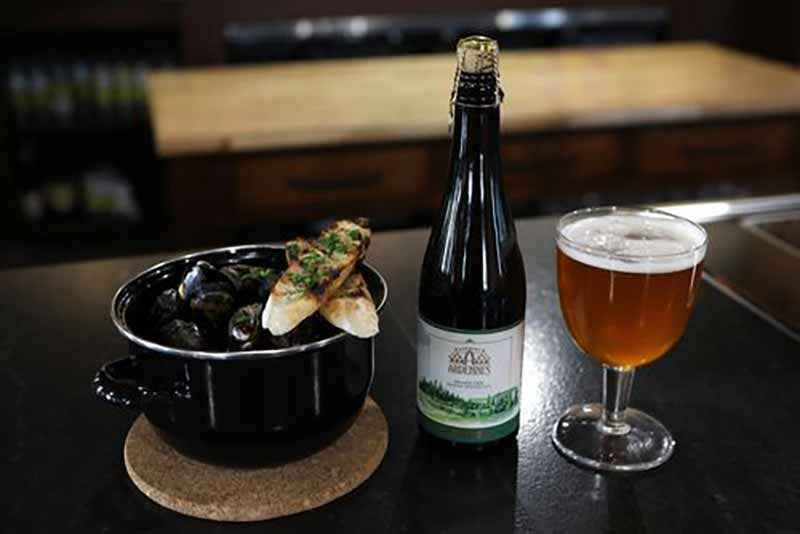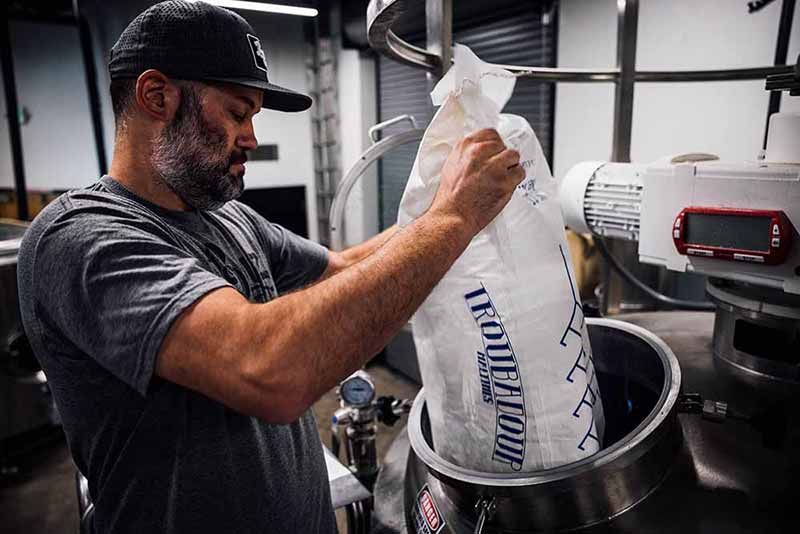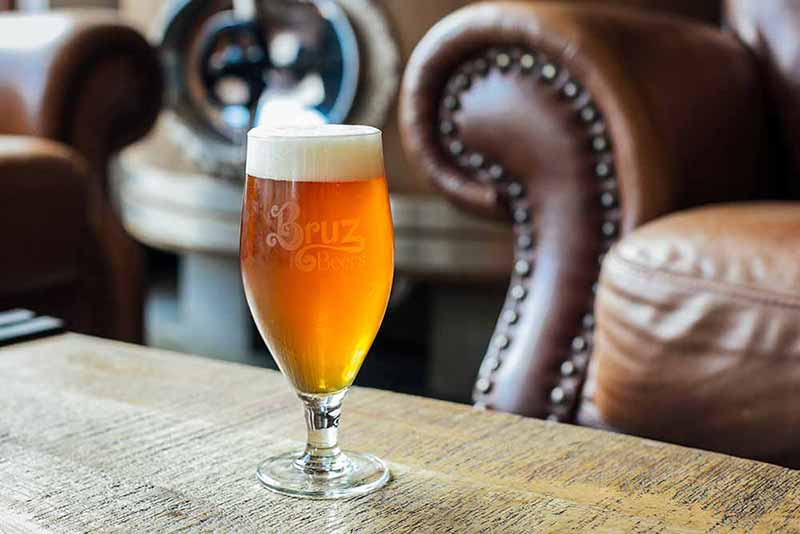
Earlier this week, we addressed the fundamentals of brewing the best Czech pilsner. Today, we’ll jump west to Belgium, covering all things Belgian tripel, one of the country’s more classic styles.
Recently, this time-honored style has gained traction in the U.S. According to data from Untappd, the Belgian tripel ranked as the ninth most checked-in style of 2021, with just shy of 1.2 million check ins.
We chatted with brewers at top-rated Belgian-inspired Bruz Beers and Brewery Ardennes to learn how to brew the best Belgian tripel. It turns out it’s all about simplification.
(Photography courtesy of @infulldetail)
What We’ll Cover in This Piece:
Affordable, Industry-Leading Brewery Software
The Impact of Belgian Tripels on American Brewers

Photography courtesy of TruBluImages
In the traditional sense, the style should be big, golden, and dry with a nice thick head. The Belgian tripels you drink in Belgium aren’t necessarily the same as those you currently find in the U.S.
“If you buy a traditional Belgian-style tripel, they are going to be dry. The ones in the U.S., there is oxidation, which comes with high-ABV beers that sit for long periods of time,” Bruz Beers Head Brewer Dave Olson says. “Sometimes, if it’s been sitting on the shelf for six months or longer, it can have the appearance of sweetness. But if you consume them in Belgium, it is considerably dry.”
Bruz Beers Co-Founders Ryan Evans and Charlie Gottenkieny say they founded the brewery based on their love of the style. It was the first beer they brewed when they opened, and now they are doing about ten versions of tripels.
“I like it to be golden with a nice big head, and the aroma should reflect pilsner malt,” Gottenkieny says. “It should be relatively hoppy compared to a dubbel and needs to finish dry, which makes it refreshing. [Olson] does a good job at doing that.”
Brewery Ardennes Co-Founder and Head of Brewery Operations Derek Edinger, like Evans and Gottenkieny at Bruz, fell in love with Belgian-style beers while in Europe, especially the classic Chimay White.
Now, at Ardennes, he says he tries to emulate what he fell in love with to his American customers.
“I try to style our beers with the most traditional take on what the style would be,” he says. “It’s all about the yeast, which gives it a fruity nose and a touch of spiciness along with a crisp, dry finish with a hint of hops.”
Gottenkieny notes that while some U.S. brewers like to add orange peel or coriander in their Belgian tripel, that is not something they do, as it isn’t in the traditional recipe of the style.
What Considerations Should You Make When Brewing a Belgian Tripel?

Photography courtesy of NYup.com
There are several considerations to be wary of when making a Belgian tripel, but one intangible that Edinger stresses for brewers is not to go overboard.
“It’s a tricky beer because it’s light, but it’s high ABV, so you have to keep everything balanced,” Edinger says. “American brewers sometimes think more is better. You got to have really good restraint.”
Olson says you need to promote dryness in the beer to be as authentic as possible. The key to achieving that is to use candy syrup, Belgian candi, or dextrose—invert sugars.
“They are very simple, very fermentable,” Olson says. “You should use twenty percent of your total fermentables with simple sugar.”
Gottenkieny says focusing on the invert sugars instead of traditional table sugars is essential.
“Table sugars lend an off flavor,” he says. “Invert sugars … completely ferment out.”
What Is an Ideal Belgian Tripel Grist?

Photography courtesy of Traverse Image
Keep it simple. All pilsner, and don’t forget the invert sugars.
“One hundred percent pilsner malts,” Olson says. “And twenty percent of your total fermentables are dextrose [or some other invert sugar].”
Edinger adds a little complexity to help with head retention in his Belgian tripel.
“We use a pilsner base malt, but you can use a pale malt,” he says. “Another thing is key for head retention; we use about fourteen percent wheat.”
Edinger adds that the Belgian tripel has a little more malt character, so you can add a little aromatic, biscuit, or Munich malts to give it bready character.
What Hops Are Best in a Belgian Tripel?

Photography courtesy of Traverse Image
“We use Chinook as a bittering hop,” Edinger says. “I don’t know if it’s authentic, but it’s a bittering hop.”
Ardennes follows the recommended guidelines, which indicate that Belgian tripel should be twenty to forty IBUs, noting his tripel lands at about thirty-five. For hop aroma, Ardennes uses East Kent Goldings hops—which they add for flavor with fifteen minutes left in the boil, as well as in the whirlpool.
Bruz Beers does a sixty-minute addition and shoots to reach twenty-five to thirty-five IBUs. Then there is a minimal addition to the whirlpool.
“We use a touch at the whirlpool. In our 15bbl batch, we do five pounds of Hallertauer or some kind of continental noble hop,” Olson says.
What Yeast Complements a Belgian Tripel?

Photography courtesy of NYup.com
Edinger stresses yeast is paramount in the finished Belgian tripel product.
“For Belgian tripels, number one, it’s all about the yeast,” he says. “It has to be a real Abbey- or Trappist-style yeast.”
Edinger adds that the yeast is very sensitive and will terminate under sixty-five degrees Fahrenheit, so he shoots to knock out at sixty-five degrees Fahrenheit and let it rise to at least seventy-five degrees Fahrenheit.
“My preference is for a yeast strain more on the fruity side, with more esters and less phenols,” says Edinger.
When we asked Olson which yeast Bruz Beers prefers for its Belgian tripel, he said Westmalle is their ideal selection.
Bruz Beers Brewer Josh Martin says that fermentation temperatures are essential. Martin says they ferment theirs in the low to mid-eighties.
“We knockout at sixty-four [degrees] and allow to naturally ramp up to that temperature to acclimate and force itself up,” Martin says.
Olson adds, “The growth phase of the yeast is a very important part. Some brewers want to pitch the yeast warm. You need to pitch cooler and let the yeast ramp up to avoid fusel alcohols.”
As for finishing alcohol by volume, the two breweries offer different takes. While Edinger says he shoots for a tripel to be somewhere in the 7% to 9% ABV for his tripels, the brewers at Bruz say they aim for 9.5% ABV for their Abbey-style tripel.
Is Bottle Conditioning Important for a Belgian Tripel?

Photography courtesy of TruBluImages
One subject that came up in conversations with Bruz and Ardennes was the importance of bottle conditioning. The process lends to the authenticity of the Belgian tripel style, they say, with a more carbonated offering than your typical American craft beers.
“A lot of people might be disappointed if they make a [Belgian tripel] and pour it into a glass and it doesn’t look right. People need to be knowledgeable that Belgian bottled beer is more carbonated than U.S. beer,” Edinger says, sharing that bottle-conditioned Belgian beer traditionally is 3.5 volumes. “There is a benefit to old-fashioned bottle conditioning; it helps with shelf life.”
He adds, “We can almost all our beer, but our [Belgian tripel] we put in old-school bottles as a tribute to the style.”
Gottenkieny seconds Edinger’s comment on shelf life. He adds that bottle conditioning develops the beer better.
“It lends a softer carbonation and huge head,” he says. “If breweries have the luxury of bottle or keg conditioning, the beer would benefit greatly.”
One Tip for Making a Belgian Tripel
Be patient.
Edinger and Evans note that breweries are so used to cranking out beers in two to three weeks, they sometimes don’t give their Belgian tripels the appropriate amount of time to condition. That can be the difference between an okay beer and a great one.
“A lot of breweries feel pressure to get it out [of the tank] and not get behind [their brew schedule],” he says, noting they have a lot more tanks at the brewery because they understand the time their tripel needs. “It’s a bigger investment upfront and slower to see capital. But you have to have that mind. If you rush, [the Belgian tripel] won’t be fully attenuated, and it’s going to be sweet.”
Edinger says that letting the beer cold crash in the tank for an extended time will help with the flavor and result in a crystal-clear product.
“I like to let ours be nice and clear,” he says. “You might have to let this one hang out for a while. There’s not much to do other than wait it out [to have the best-finished product].”
Five Examples of a Great Belgian Tripel

Compilation courtesy of Bruz Beers
There are a number of classics from Belgium showcasing how the authentic style is made. Top-rated Belgian tripels hailing from the mainland include Tripel Karmeliet by Brouwerij Bosteels, Tripel by St. Bernardus, and Westmalle Trappist Tripel by Brouwerij der Trappisten van Westmalle.
Bruz Beers and Brewery Ardennes in the U.S. are cranking out beers close to the authentic styles made in Belgium.
The Bruz Tripel, Olson says, is “the most authentically Abbey-style tripel” the brewery has. The 9.5% ABV beer is a dry blonde ale with notes of peaches and pears, citrus spice, and some earthy hops.
Edinger loves Brewery Ardennes’ Grand Cru Tripel, saying it’s as close to a traditional tripel as you can find in the U.S. The 7.5% ABV beer has 39 IBUs and emits notes of grassy, orange, and white pepper aroma and flavor.
“That’s my favorite,” Edinger says. “It’s my every-night-shift beer when we close the tasting room.”



